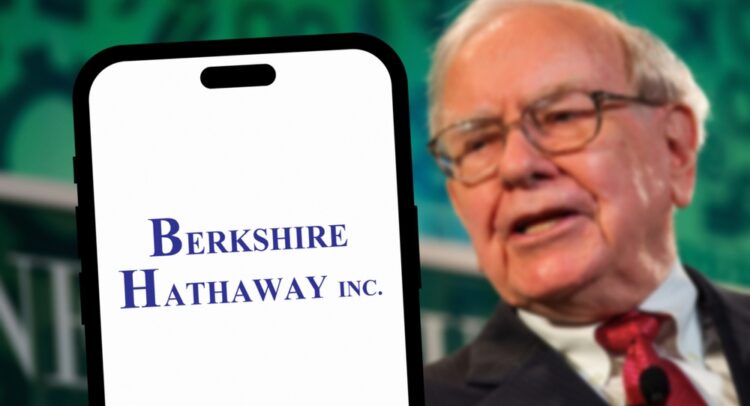Your cart is currently empty!
Berkshire Hathaway: The Conglomerate Empire

Berkshire Hathaway stands as one of the most remarkable stories in corporate history. What began as a struggling textile manufacturing business was transformed into a diversified multinational conglomerate under the visionary leadership of Warren Buffett. With a market capitalization of approximately $800 billion, Berkshire Hathaway is not only one of the world’s most valuable companies—it is a model of long-term investment success, stability, and disciplined capital allocation. From insurance and railroads to manufacturing and retail, the company’s portfolio spans multiple sectors, making it a resilient powerhouse of American capitalism.
The Origins of Berkshire Hathaway
The origins of Berkshire Hathaway trace back to the 19th century when it operated as a textile manufacturing firm. For decades, the company produced textiles in New England and was a regional name in the fabric industry. However, by the mid-20th century, it had fallen into decline due to competitive pressures and structural shifts in manufacturing. When Warren Buffett began purchasing shares of Berkshire Hathaway in the 1960s, he initially viewed it as a value investment. What followed was a complete transformation that reshaped its destiny and the future of American investing.
The Buffett Revolution: Investing Over Operations
Warren Buffett’s genius lay not in trying to revive the textile business but in using its cash flows to invest in more promising ventures. Under Buffett’s leadership, Berkshire Hathaway gradually moved away from textiles and began acquiring insurance companies. The cash generated from these businesses—known as “float”—allowed the company to make long-term equity investments without relying on debt or outside capital. This strategic use of float became a cornerstone of Berkshire Hathaway’s business model and enabled it to make some of the most legendary investments in corporate history.
Core Holdings in Insurance: GEICO and Beyond
One of the pillars of Berkshire Hathaway’s empire is its insurance segment. The acquisition of GEICO proved to be one of Buffett’s most successful moves, providing steady underwriting profits and a consistent float for investment. Berkshire’s insurance group also includes General Re, Berkshire Hathaway Reinsurance Group, and other specialty insurance operations. These companies not only bring in billions in premiums annually but also provide the liquidity that fuels other strategic investments across the conglomerate. Insurance is not just a business line—it is the financial engine behind the entire structure of Berkshire Hathaway.
Railroads and the BNSF Transformation
In 2010, Berkshire Hathaway completed its acquisition of BNSF Railway, one of the largest freight railroad networks in North America. This marked a shift in strategy toward owning and operating capital-intensive businesses with durable economic advantages. BNSF contributes billions in revenue and profits annually and plays a critical role in transporting goods across the U.S. economy. The railroad’s inclusion in the Berkshire portfolio brought diversification and long-term infrastructure exposure, aligning with Buffett’s preference for tangible assets with consistent demand.
Utilities and Energy: A Focus on Sustainable Growth
Another vital sector within Berkshire Hathaway’s portfolio is energy. Through its subsidiary, Berkshire Hathaway Energy, the company operates electric and gas utilities across the U.S. and parts of the UK and Canada. It also invests heavily in renewable energy projects including wind and solar farms. The utility businesses provide a regulated, stable income stream, and Berkshire Hathaway Energy’s emphasis on sustainability and infrastructure investment reflects the company’s long-term mindset. This division contributes significantly to the conglomerate’s consistent cash flow and represents its commitment to responsible capitalism.
Manufacturing, Retail, and Service Businesses
Berkshire Hathaway owns a wide variety of non-insurance businesses across industries. This includes manufacturing giants like Precision Castparts, industrial groups like Marmon Holdings, and building materials firms such as Shaw Industries. The retail portfolio includes Nebraska Furniture Mart, See’s Candies, and Borsheims. Berkshire also owns service companies in aviation, equipment leasing, and distribution. This diversity adds to the strength of the overall enterprise and provides earnings stability across economic cycles. Each of these businesses operates autonomously but is selected for its strong fundamentals and trustworthy management.
The Investment Portfolio and Public Equities
Aside from wholly owned businesses, Berkshire Hathaway is famous for its massive holdings in public companies. The investment portfolio includes significant stakes in Apple, Coca-Cola, American Express, Bank of America, and other leading brands. These investments are made with a long-term horizon, often held for decades. Buffett’s investment philosophy emphasizes buying high-quality businesses at fair prices and holding them through market volatility. This approach has allowed Berkshire to earn extraordinary returns on capital and to compound wealth more effectively than almost any other company in history.
Shareholder Philosophy and Annual Meetings
Berkshire Hathaway has one of the most devoted shareholder bases in the world. Its annual meetings in Omaha, often dubbed the “Woodstock for Capitalists,” attract tens of thousands of investors from around the globe. These meetings reflect the company’s unique culture—transparent, humble, and intellectually honest. Buffett and Vice Chairman Charlie Munger used these events to answer investor questions directly, reinforcing their belief in long-term value creation and shareholder alignment. The emphasis is always on understanding the business, not just chasing the stock price.
Leadership Transition and Future Outlook
As Warren Buffett and Charlie Munger enter the later stages of their legendary careers, succession planning has become an important topic for shareholders. Greg Abel, who oversees the non-insurance businesses, has been named Buffett’s likely successor. The leadership transition is designed to maintain Berkshire’s core values—rational capital allocation, decentralized management, and a focus on long-term compounding. With a disciplined investment philosophy and a robust portfolio of businesses, Berkshire Hathaway is well-positioned to thrive in the post-Buffett era.
Market Capitalization and Financial Performance
With a market cap of approximately $800 billion, Berkshire Hathaway is one of the largest publicly traded companies in the world. It consistently ranks in the top ten global companies by value. Its financial structure is conservative, with massive cash reserves, low debt relative to assets, and significant earning power across multiple sectors. This financial strength allows it to weather economic downturns, seize acquisition opportunities, and deliver shareholder value through consistent book value growth. Unlike most corporations, Berkshire does not pay a dividend, preferring to reinvest capital into new ventures or share repurchases.
Final Thoughts on Berkshire Hathaway’s Legacy
Berkshire Hathaway is more than just a company—it is a philosophy. It represents a disciplined, principled approach to investing that values patience, clarity, and integrity. The company’s legacy is not only measured in dollars but in its influence on how the world thinks about value, risk, and long-term success. From a textile firm to a global conglomerate spanning insurance, railroads, utilities, manufacturing, and public equities, the story of Berkshire Hathaway is a lesson in transformation guided by vision and trust.

Mr. Rajeev Prakash
Rajeev is a well-known astrologer based in central India who has a deep understanding of both personal and mundane astrology. His team has been closely monitoring the movements of various global financial markets, including equities, precious metals, currency pairs, yields, and treasury bonds.
Featured Post
Financial Astrology Terminal
The Financial Astrology Terminal is a web platform that combines real-time U.S. market data (S&P 500, Nasdaq, Dow, Russell, key stocks and commodities like gold and silver) with planetary cycles, giving traders and investors astro-timing signals on top of normal charts and analysis.
